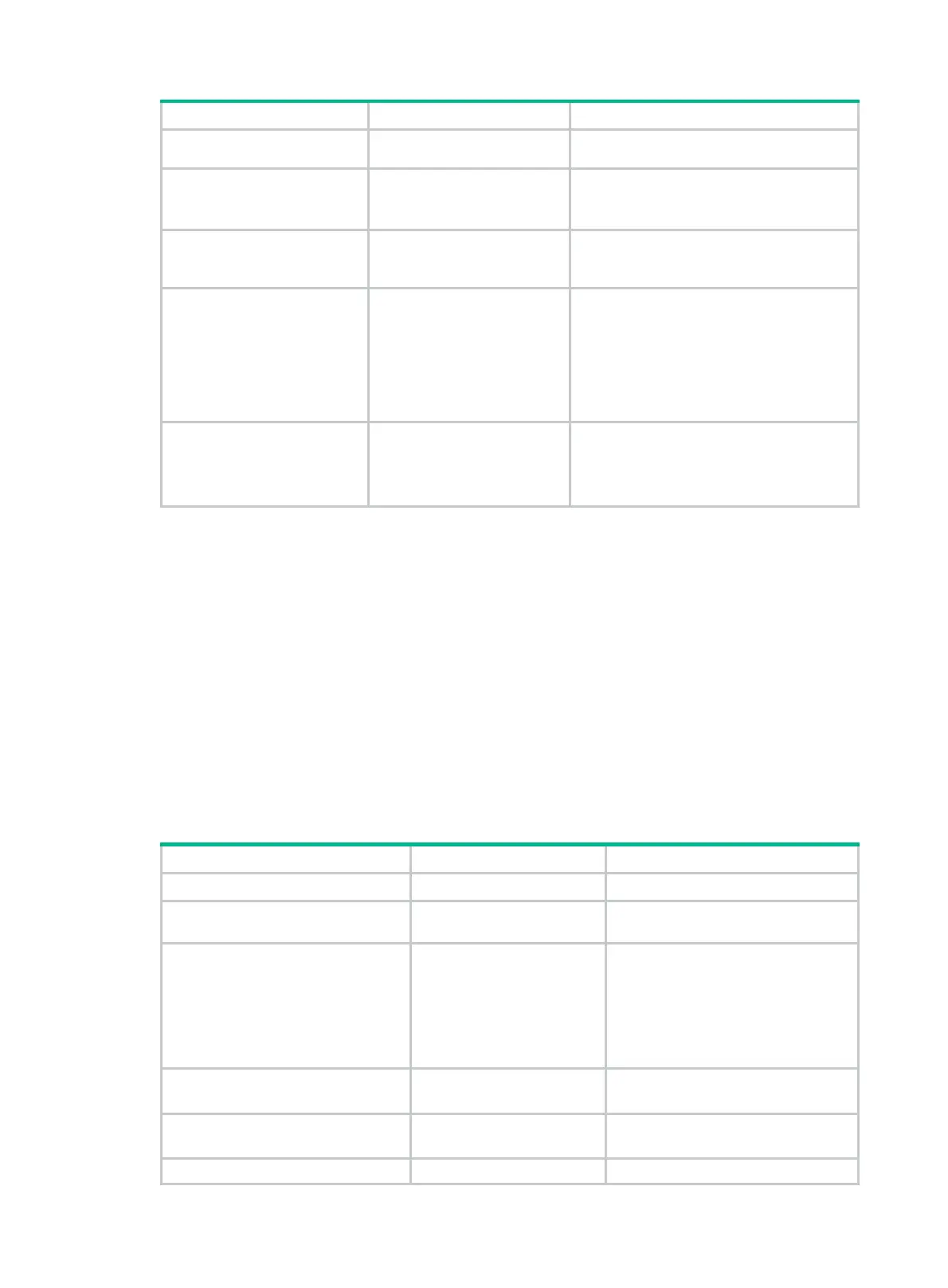133
Step Command Remarks
same as the port number of the listening
service on the NQA server.
5. (Optional.) Specify the
payload fill string for the
probe packets.
data-fill
string
The default payload fill string is
hexadecimal number
00010203040506070809.
6. (Optional.) Set the
payload size for the
probe packets.
data-size
size The default setting is 100 bytes.
7. (Optional.) Specify the
source IP address for the
probe packets.
• IPv4 address:
source ip ip-address
• IPv6 address:
source ipv6
ipv6-address
By default, the packets take the primary IP
address of the output interface as their
source IP address.
The source IP address must be the IP
address of a local interface, and the
interface must be up. Otherwise, no probe
packets can be sent out.
8. (Optional.) Configure the
expected data.
expect data
expression
[
offset
number ]
By default, no expected data is configured.
If you want to configure this command,
make sure the
data-fill
command is
already configured.
Configuring the HTTP template
A feature that uses the HTTP template performs the HTTP operation to measure the time it takes the
NQA client to obtain data from an HTTP server.
The expected data is checked only when the expected data is configured and the HTTP response
contains the Content-Length field in the HTTP header. The Content-Length field indicates the packet
body length, and it does not include the header length. An HTTP packet with this field indicates that
the packet data does not include the multipart type and the packet body is a data type.
The status code of the HTTP packet is a three-digit field in decimal notation, and it includes the
status information for the HTTP server. The first digit defines the class of response, and the last two
digits do not have any categorization role.
Configure the HTTP server before you perform the HTTP operation.
To configure the HTTP template:
Step Command Remarks
1. Enter system view.
system-view
N/A
2. Create an HTTP template and
enter its view.
nqa template http
name N/A
3. Specify the URL of the
destination HTTP server.
url
url
By default, no URL is specified for the
destination HTTP server.
Enter the URL in one of the following
formats:
• http://host/resource.
• http://host:port/resource.
4. Specify an HTTP login
username.
username
username
By default, no HTTP login username
is specified.
5. Specify an HTTP login
password.
password
{
cipher
|
simple
} password
By default, no HTTP login password
is specified.
6. Specify the HTTP operation
operation
{
get
|
post
| By default, the HTTP operation type

